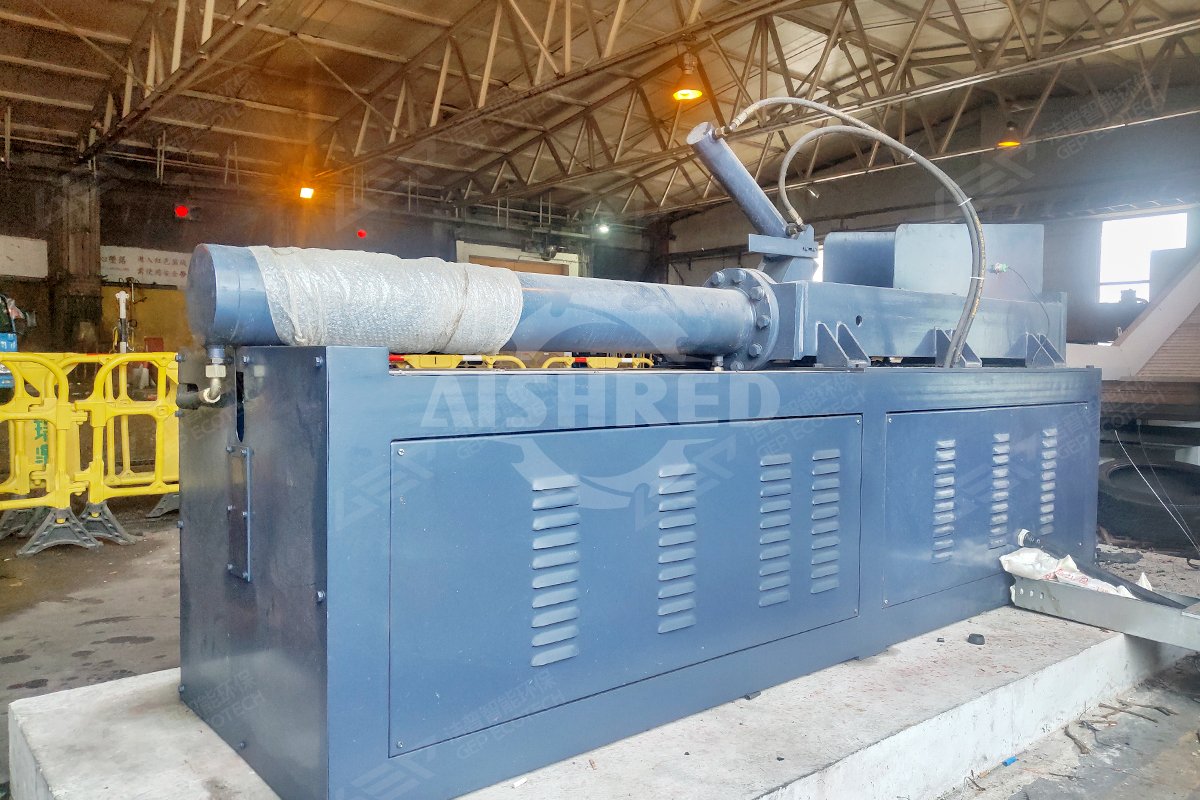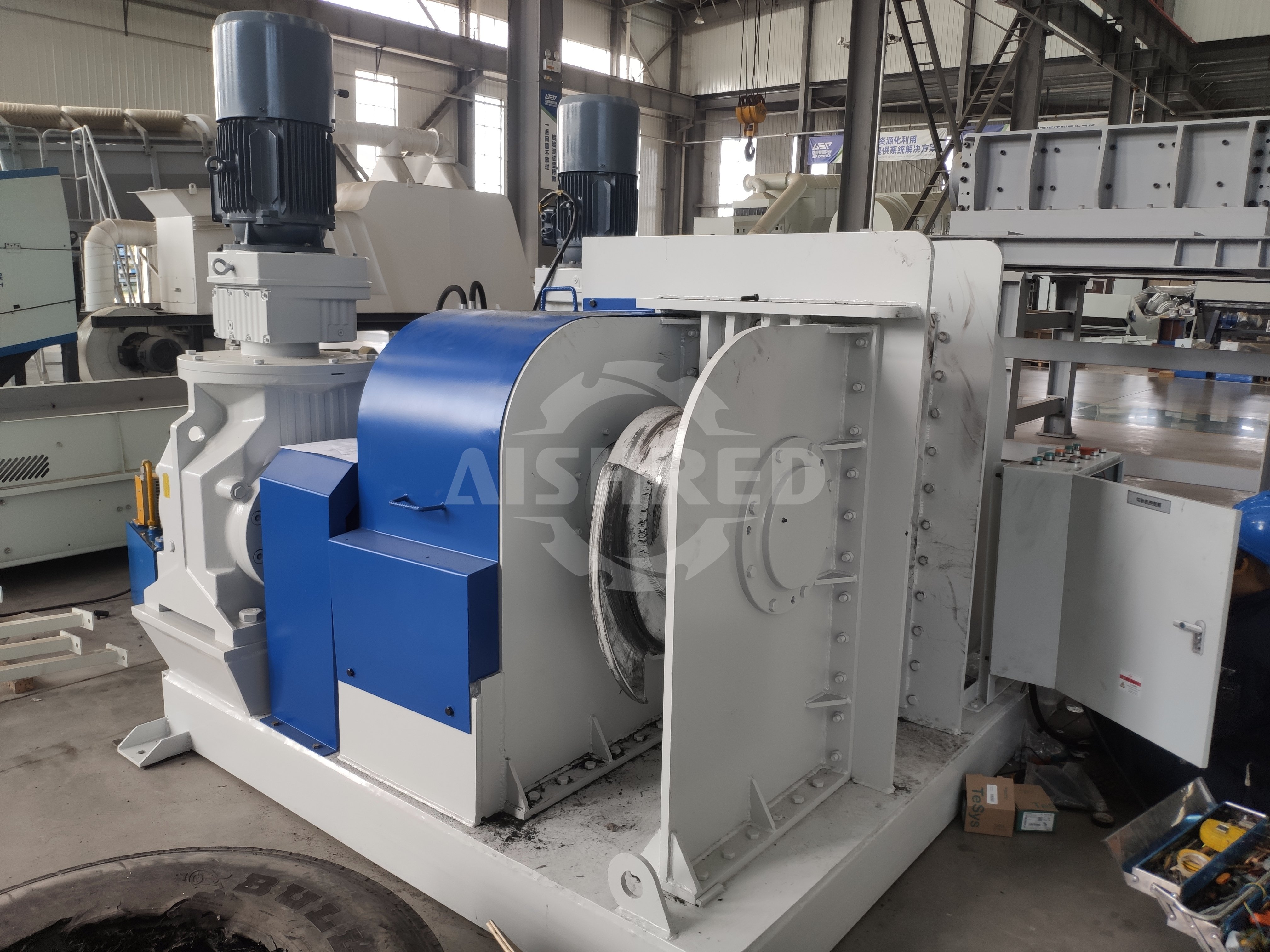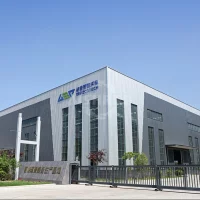Tire debeader, which is also called tire bead wire puller, is one of the key equipment for waste tire recycling and processing, mainly used to efficiently and completely extract bead wires (commonly known as "bead wires" or "wire rings") from the bead area of waste tires (especially all steel radial tires). It is a kind of key equipment for tire recycling plants, such as tire refurbishment plants, large tire repair shops, and waste tire processing plants, facilitating subsequent rubber crushing, wire recycling, and resource reuse.
What Benefits Can Using a Tire Debeader Bring to Your Production Line?
- Completing resource recycling: Achieving efficient and high-purity separation of high-value steel wires (bead wires) from rubber in tires is an essential key link in tire resource utilization.
- Improving the recycling value of steel wires: The extracted steel wire is intact, clean, and has less winding, and can be directly sold as high-quality scrap steel or deeply processed. Its value is much higher than that of broken steel wire mixed in rubber powder/granules after shredding.
- Improving rubber quality: Pre removing the bead wire can significantly reduce the wear of subsequent shredding and grinding equipment (especially grinding machines), improve the purity of rubber granules/powder (low impurity content), and enhance its application value and selling price.
- Reduce subsequent costs: Protect subsequent equipment (such as shredder cutters, mill screens, and grinding discs), reduce maintenance frequency and replacement costs.
- Environmental benefits: Promote the harmless and resourceful treatment of waste tires, reduce environmental problems caused by landfill and incineration.
- Significant economic benefits: Although there is investment in equipment, it can bring considerable economic returns by improving steel wire recovery rate, enhancing rubber product quality, reducing equipment wear and maintenance costs.
Comparison and Analysis of Three Main-Stream Tire Debeaders
The core working principle of tire debeader is to use strong mechanical tension, that is, the power system (hydraulic cylinder or motor) drives the wire drawing mechanism to apply continuous and strong linear tension along the tangent direction of the tire bead steel wires, overcoming the wrapping and adhesion forces of rubber on the steel wires, and fully and continuously pulling out the steel wire bundle (usually twisted from multiple high-strength steel wires) embedded in the tire bead rubber for centralized recycling and processing. The most common types of tire debeaders are as follows:
Uni-directional Hydraulic Tire Debeader
Working Principle:
It is driven by a motor to drive the hydraulic system and oil cylinder, and the hook is connected to the oil cylinder rod. Due to the movement of the oil pump and oil cylinder, the hook undergoes reciprocating motion. Place the tire in the pull tab, extend the hook out of the pull tab, hook onto the inner wire of the tire, and then press the start button. Due to the strong pulling force of the oil cylinder, the entire steel wire is pulled out, and the rubber on the sidewall is torn by the pull tab, thus achieving the purpose of separating the steel wire from the tire.

Advantages:
- Relatively simple structure: The main components are the motor, hydraulic system, hook, cross plate, body, control handle, guide wheel, etc. The whole machine has a compact structure, occupies a small area, and is easy to transport and install.
- Huge pulling force: The hydraulic system can provide very smooth and huge pulling force (up to tens of tons), suitable for handling large all steel radial tires or tightly bonded steel wires.
- Durable and low maintenance cost: The main components are made of wear-resistant materials, which have high strength, wear resistance, and long service life. The hydraulic system adopts advanced constant power variable displacement piston pump technology, with low noise and high pressure, which improves the service life of the equipment and the safe operation of the control system.
- Easy to operate: Equipped with a tire lifting device, allowing different tires to be easily placed, reducing labor operation difficulty and increasing output; By manually controlling the front and rear movements of tire lifting and drawing, the steel wire can be accurately positioned to improve work efficiency.
- Price advantage: Low purchase cost, suitable for situations with limited budget or not particularly demanding efficiency requirements
Limitations:
- Low efficiency: Intermittent work, the return of the piston rod and the time to re clamp the wire are ineffective working times. Only one side of the tire bead wire can be removed at a time, and one tire needs to be processed twice.
- More manual intervention required: Operators usually need to manually assist in re clamping and positioning the steel wire, which results in relatively high labor intensity.
Bi-directional Hydraulic Tire Debeader
Working Principle:
Using two hydraulic cylinders working in parallel or series (or a double acting cylinder in conjunction with a special mechanism). Continuous threading can be achieved:
a) When one oil cylinder (A) extends to draw thread, the other oil cylinder (B) retracts.
b) When cylinder A completes its stroke and begins to retract (releasing the fixture), cylinder B has already completed its retraction and is ready.
c) Through clever linkage or clamping mechanism switching design, the clamping of the steel wire seamlessly transfers from the fixture of cylinder A to the fixture of cylinder B.
d) Cylinder B immediately begins to extend for threading, while cylinder A retracts and resets. This cycle repeats itself to achieve almost continuous steel wire pulling.

Advantages:
- High efficiency: Compared with unidirectional machines, it eliminates ineffective return time, can work continuously, and significantly improves production efficiency (usually by 30% -50% or even higher).
- Improved automation level: Usually equipped with automatic clamping and transmission mechanisms, reducing the labor intensity of operators and their dependence on proficiency.
- More complete wire extraction: Continuous and stable tension helps to extract longer and complete wire bundles.
- Maintaining the advantage of high hydraulic tension: It can still handle difficult to pull steel wires.
Limitations:
- Complex structure: The manufacturing cost and maintenance difficulty are higher than those of unidirectional machines.
- Higher cost: The initial investment is higher than that of a one-way machine. The overall length of the equipment is relatively long and occupies a large area.
Bi-directional Electric Tire Debeader
Working Principle:
The motor drives the dual oil pump to operate at high speed through a coupling, providing high-pressure oil to drive the piston to perform reciprocating motion. When the equipment starts running, the wire drawing cylinder drives the hook installed on the trolley to pull out the steel wire inside the tire bead. After the steel wire is pulled out, the wire drawing cylinder resets and performs a cyclic reciprocating motion; During the working process, the V-shaped pressure block on the wire pressing cylinder presses the just pulled steel wire onto the hook at the set position to prevent the steel wire from slipping during drawing and rebounding after being pulled out, which may cause injury.

Advantages:
- Compact structure and small footprint: The equipment adopts an integral bottom plate, and all components such as hydraulic stations, oil cylinders, and electrical control cabinets are fixed on the rack, making the overall structure of the equipment simple, aesthetically pleasing, small footprint, and easy to transport and install.
- High efficiency: The equipment adopts a dual transmission and dual hook structure, which can simultaneously pull out the steel wires on both sides of the tire. When the wire drawing hook of any working section is reset, the wire drawing hook of the other end starts working, so that the wire drawing cylinder will not do useless work during the working process, reducing energy consumption. The processing capacity is three times that of a single hook wire drawing machine, stable and reliable, and it is currently the most efficient wire drawing equipment on the market.
- Optimization design: The equipment adopts mechanical transmission, and the hook adopts a disc-shaped structure, which makes the efficiency higher and occupies a smaller area. The oil cylinder does not have a rodless chamber, which increases the operating speed of the cylinder and reduces the time required for wire drawing.
- Safety performance: The entire device is equipped with an automatic circuit protection system and a safety type protection bracket, making operation safer and simpler.
- Low maintenance cost: The main components are made of special materials and undergo subsequent special treatment, with high strength, wear resistance, and durability. They can be repaired by welding and are easy to maintain. The use of a plunger type variable displacement pump for oil supply not only reduces the working noise of the equipment, but also maintains the original drawing speed of the main cylinder during the operation of the wire pressing cylinder, improving the working efficiency of the equipment and the service life of the control valve.
- Improved automation level: By using inner positioning of the guide rail, the inductive sensor works reliably, the hook positioning accuracy is high, the wire drawing cylinder runs smoothly, reducing the labor intensity of operators and their dependence on proficiency.
Limitations:
- Tensile strength: Its ultimate tensile strength in pulling out bead wires can be slightly lower than that of top-grade hydraulic debeaders. For extremely tough or oversized tires, this might result in reduced efficiency.
- Highes initial cost: The initial investment is relatively high compared with other two types, as the advanced motor system and control components require a larger upfront cost. This may increase the financial pressure for small or newly established recycling plants.
Summary and Suggestions
Uni-directional Hydraulic Tire Debeader: Simple structure, huge tensile force, and the lowest price. The disadvantage is low efficiency and a lot of manual intervention. Suitable for small recycling stations, low processing capacity, budget constraints, or specialized handling of large engineering tires that are extremely difficult to extract.
Bi-directional Hydraulic Tire Debeader: Its advantages include significantly higher efficiency than unidirectional machines, improved automation, and maintaining high tensile strength. The disadvantages are complex structure and high cost. Suitable for medium-sized recycling enterprises who pursuing efficiency and cost balance.
Bi-directional Electric Tire Debeader: The advantages are the highest efficiency, energy saving and environmental protection, high degree of intelligence, easy maintenance, and good working environment. But the initial cost is the highest and the ultimate tensile strength may be slightly inferior to top-level hydraulic presses. Suitable for large and medium-sized recycling enterprises, modern tire processing factories, and users who focus on production efficiency, automation, environmental protection, and long-term operating costs, this is the mainstream trend for future development.
In summary, the choice of tire bead wire puller ultimately depends on your specific budget, daily/monthly average tire processing volume, requirements for efficiency and quality, expectations for the working environment, and long-term operational planning. Whether your project is in the early stage of market research, supplier selection, or equipment procurement, you can consult us. GEP ECOTECH will customize an exclusive solution for you!

